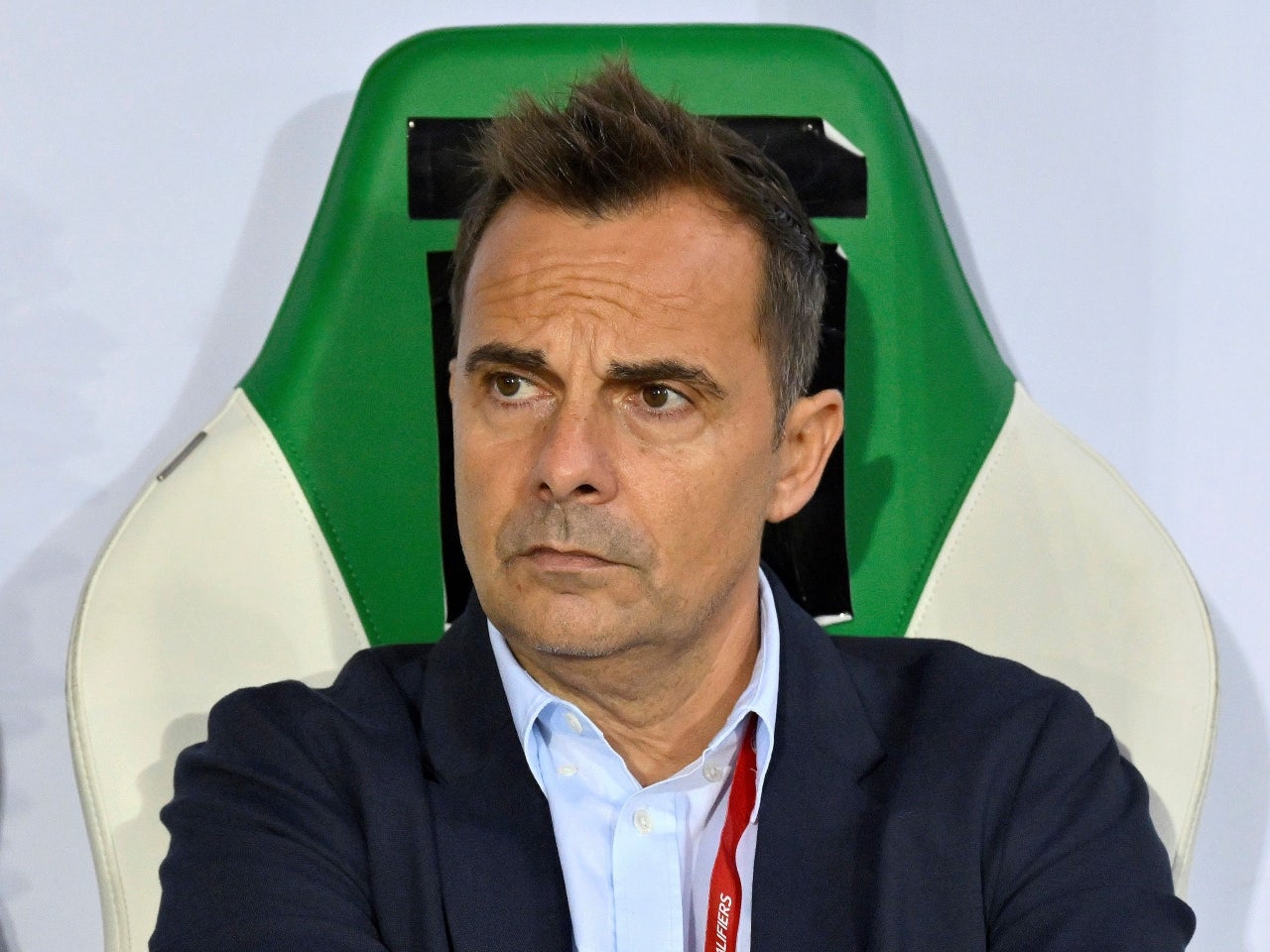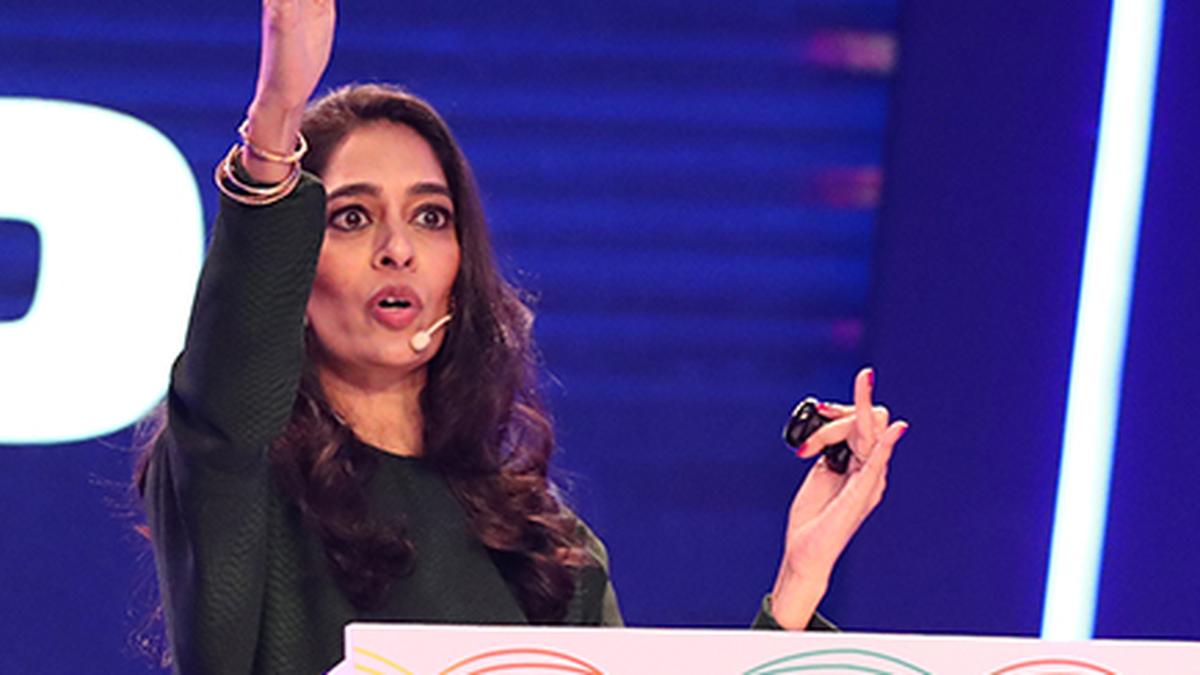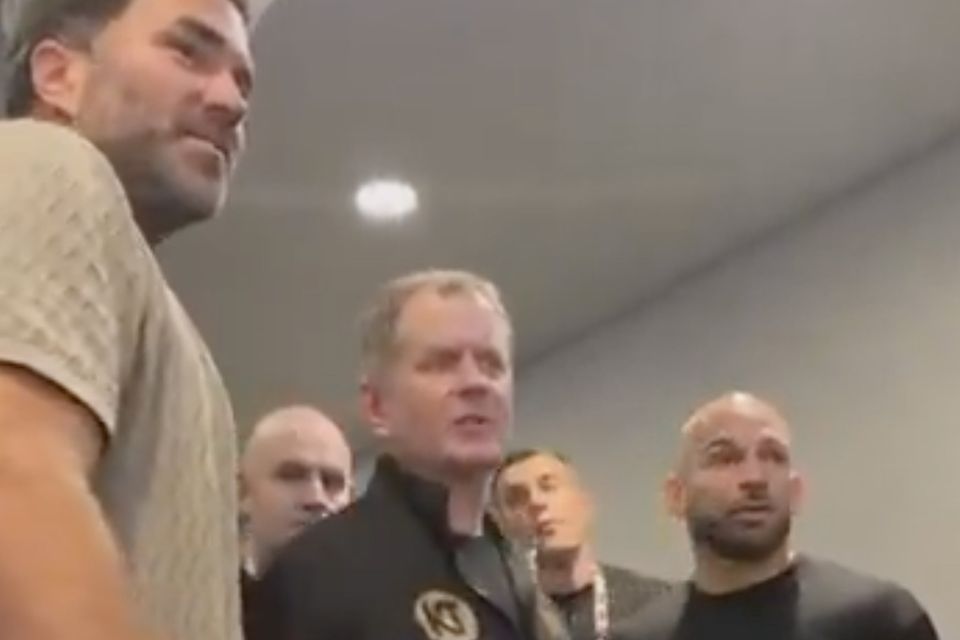
There are myriad ways in which one can define what constitutes an NBA contender. Well, normally that's the case. For our purposes, we're going to keep things incredibly simple.
Since winning matters most, we're using win-loss percentages to set our field of the top contenders to emerge early into the 2024-25 campaign. More specifically, we're spotlighting the six teams with a .700-plus winning percentage, identifying their biggest flaws and uncovering potential fixes.
For fans of championship-hopefuls who don't appear on this list, fear not: The list of contending teams remains fluid throughout the 82-game marathon and could (and likely will) add and subtract squads over the next six months. For now, though, this sextet has earned this distinction, so let's help them scratch their biggest itch. Boston being routinely manhandled in the middle isn't super surprising.
Given the Shamrocks' commitment to winning basketball math , they're much more interested in burying opponents beneath a barrage of threes than they are in overpowering folks in the post. And they are, of course, having to operate around a 7'2", 240-pound hole on the interior, since Kristaps Porziņģis has yet to debut following offseason surgery. All of that said, Boston maybe didn't plan on getting pushed around to this degree.
The Celtics sit 18th in rebounding percentage ( 49.6 ), 20th in restricted-area field-goal percentage allowed ( 67.1 ) and 22nd in opponents' paint points ( 51.
2 per game). Having a healthy Porziņģis could go a long way toward clearing these areas up. While it's not yet clear when the big man will make it back, he "is lurking," per NBC Sports Boston's Chris Forsberg , who noted that the way Porziņģis is warming up of late "is very similar to what we saw during the playoffs—maybe even a step beyond that.
" If the hope is Porziņģis providing a one-man solution, though, the Celtics better make sure they are comfortable with their insurance policies. Between his myriad medical problems and Al Horford's age (38), the red flags are flying with this frontcourt, and Boston would probably prefer not to be in the position of heavily relying on the likes of Neemias Queta, Luke Kornet and Xavier Tillman Sr. Even a modest move for an established backup big could go a long way toward building trust in this center rotation.
It's hard to nitpick anything with Cleveland's start. You can question the level of competition, but you can't question the results: a historic 13-0 record with top-six efficiency rankings on offense ( second ) and defense ( sixth ). If it's possible to collect Coach of the Year honors in the middle of November, Kenny Atkinson might have to clear space in his trophy case.
The new Cavaliers skipper has pulled all the right strings from managing Donovan Mitchell's minutes to empowering Evan Mobley to helping Darius Garland bounce back and seemingly finding the right role for every member of the supporting cast. Since this exercise requires nitpicking, though, let's focus on the lingering questions around this frontcourt. Admittedly, they aren't ones that have knocked anything off-course just yet, but they are the worries everyone in Northeast Ohio carried into the season.
For instance, it will take more than 191 minutes of basketball brilliance ( plus-10.8 net rating) to believe the spacing-starved combo of Mobley and Jarrett Allen can coexist against playoff defenses. Mobley is shooting a hair more threes than ever, but still not enough to bother opposing defenses (1.
6 per game), especially when he's converting such a low percentage (33.3). For anyone needing a reminder, this offense was wholly nonfunctional when these shared the floor last postseason ( 99.
4 points per 100 possessions). Cleveland's backup options at center are limited at best and might be unusable in the playoffs. It's also possible the Cavaliers will find out they still need to upgrade on the wing.
Credit them for making it work so far, but this position looked like it might be a problem before Caris LeVert (45.0 three-point percentage) and Isaac Okoro (48.5) got off to such fiery, assuredly unstainable starts.
There's a reason this front office was on the three-and-D search as recently as this summer. Even if the Cavs keep the Allen-Mobley combo intact, it wouldn't be at all shocking to see them pursue a two-way wing or at least a backup 4/5 in trades. A statistical snapshot shows the Nuggets are good at a lot of things, but they're best at having Nikola Jokić on the roster.
Despite opening the campaign with consecutive losses, losing Aaron Gordon to injury and seeing Jamal Murray struggle to harness his shot, Denver is 7-3 and carrying a five-game winning streak into Friday night. And it's all basically because Jokić is unstoppable. Sure, it helps that Christian Braun is blossoming as a first-time starter, and that Michael Porter Jr.
can go on human-torch type of shooting runs, but the Nuggets are really good because Jokić is great. The three-time MVP is arguably at the top of his game, pacing the league in rebounds (13.7) and assists (11.
7) while also posting a personal-best points average (29.7— on 56.3/56.
4/84.3 shooting! ). Jokić is the kind of megastar who can do almost anything on the basketball court, but he can't make this dismal bench group look any better.
Nuggets' second-teamers are last by a mile in net efficiency ( minus-7.3 ), which helps explain coach Michael Malone's hesitance to call upon them (second-fewest minutes). What hurts is this was largely Denver's own doing.
When the Nuggets let Bruce Brown and Kentavious Caldwell-Pope walk in consecutive offseasons, they lost established contributors and had only unproven young players to replace them. While Braun has handled his promotion with aplomb, the rotation still has a void behind him. Peyton Watson is doing everything defensively, but he's also shooting 40.
8 percent from the field. Julian Strawther is essentially the opposite, a shot-maker getting cooked defensively (fifth percentile of estimated defensive plus-minus ). The less said about Russell Westbrook or the backup bigs, the better.
Denver's trade options are limited, so the plan likely largely hinges around patience and player development. Still, the Nuggets should consider shopping at some point, at least for a backup big, if not a Westbrook replacement. Patience only lasts so long when an all-galaxy talent like Jokić is at his peak.
The Warriors have turbo-boosted out of the starting blocks with nine wins to show for their first 11 hardwood trips and unrivaled two-way balance. While history holds that champions generally need top-10 efficiency rankings on both ends of the floor, Golden State has upped the ante and become the Association's only club with top-five marks on offense ( third ) and defense ( fourth ). This has been a stunning showing from a team that, frankly, wouldn't have cracked anyone's list of inner-circle contenders a month ago, but it isn't a sign that everything is fixed for franchise.
Stephen Curry still lacks a co-star, and whatever hope that existed of finding one in-house might be already extinguished. Jonathan Kuminga lost his starting spot after only three outings. Andrew Wiggins still hasn't solved the riddle of nightly consistency.
Buddy Hield bared an early resemblance to a long-lost splash sibling, but his shooting has cooled, and his minutes were always going to be held in check by his defensive deficiencies. There's a reason that prior to this season's opening tip, Curry was publicly reminding general manager Mike Dunleavy Jr. that the gig was "an ongoing job," per The Athletic's Anthony Slater .
This has been a fun start keyed by a lot of fun, free-flowing basketball, but nothing that has happened should've lessened Golden State's appetite for a blockbuster trade. This will need addressing at some point if the Warriors hope to sustain their success. There is no hope of figuring this out internally, which perhaps is the goal to solving one of the early problems (like the free-throw shooting of everyone not named Curry or Hield, for instance).
Golden State has earned the contender label—through our simple application of it, at least—but it won't stick if Curry remains without a high-end running mate. Last season, the Thunder were the league's third-worst rebounding team, corralling just 48.4 percent of all errant shots.
Still, they've managed to take a step back this season—in both ranking ( dead last ) and rebounding percentage (46.0). On one hand, it's tempting to cut Oklahoma City some slack, considering it just proved it can win at a super-high level despite this weakness.
On the other, this club made a concerted effort to attack this issue this offseason by luring Isaiah Hartenstein away from the New York Knicks with a three-year, $87 million deal. The catch, of course, is that Hartenstein has yet to log a second in the Sooner State after suffering a fracture in his left hand during the preseason. Adding.
..well, injury to injury, the Thunder also find themselves without other bigs Chet Holmgren (pelvic fracture) and Jaylin Williams (hamstring strain).
The Thunder have shifted to small-ball out of necessity, entrusting wings like Jalen Williams and Kenrich Williams with floor time at the 5 spot. "There's no perfect way to play. We've learned the trade-offs of being small," Thunder coach Mark Daigneault told reporters .
"We've got a system that is highly adaptive to that because of the way that we kinda built this." All things considered, though, Oklahoma City would prefer to have small-ball as a change-up option instead of its default lineup. When it's spotting opponents 16.
6 second-chance points per game (tied for the third-most), it isn't hard to understand why. Still, the Thunder seem—and, for the most part, should be—willing to wait out their bad injury luck and see if this full-strength frontcourt can cure their biggest ill. If they get healthy and still get clobbered on the glass, that'll be a different story, but given their comically large collection of trade assets, it's a need they could externally attack if they have to.
Injuries are the biggest concern for this club, which, while deeper than last season, remains one of the league's more top-heavy teams. That's less of a design flaw than it is an unfortunate reality (though, given the recent medical histories of Kevin Durant and Bradley Beal, one could argue it's at least design flaw-adjacent). Between the Suns' injury concerns and limited (albeit improved) depth, it's perhaps no surprise that they don't have the widest margin for error.
Their win rate might have secured their spot among this conversation of contenders, but their overall efficiency is far from elite ( plus-0.3 net rating, 14th). One way they could help themselves is causing more chaos on the defensive end.
While they have a handful of havoc-wreakers—Durant, Royce O'Neale, Josh Okogie and rookie Ryan Dunn—this is not a disruptive defense. Phoenix is 21st in steals per 36 minutes and 26th in opponents' turnover rate. Improving these areas would not only help finish more defensive possessions, it would also buy the Suns some easy looks in transition.
Given the extremely jump-shot heavy diet of this offense— no team takes fewer shots at the rim—it could stand to add a few gimmies to the menu. That's triply true when considering how potent this group is in transition (1.24 points per possession, third-best overall).
Because Phoenix pumped so many assets into the creation of this roster, its options are pretty limited on the trade market. That may not be a huge hindrance, though, since defensive specialists aren't the most expensive players to acquire. In the meantime, the Suns could try upping the floor time of Dunn and Okogie, especially when both have been holding their own on the offensive end.
Unless otherwise noted, statistics used courtesy of NBA.com and Cleaning the Glass and current through games played on Thursday..







_2024_11_16_20_07_30.jpg)






